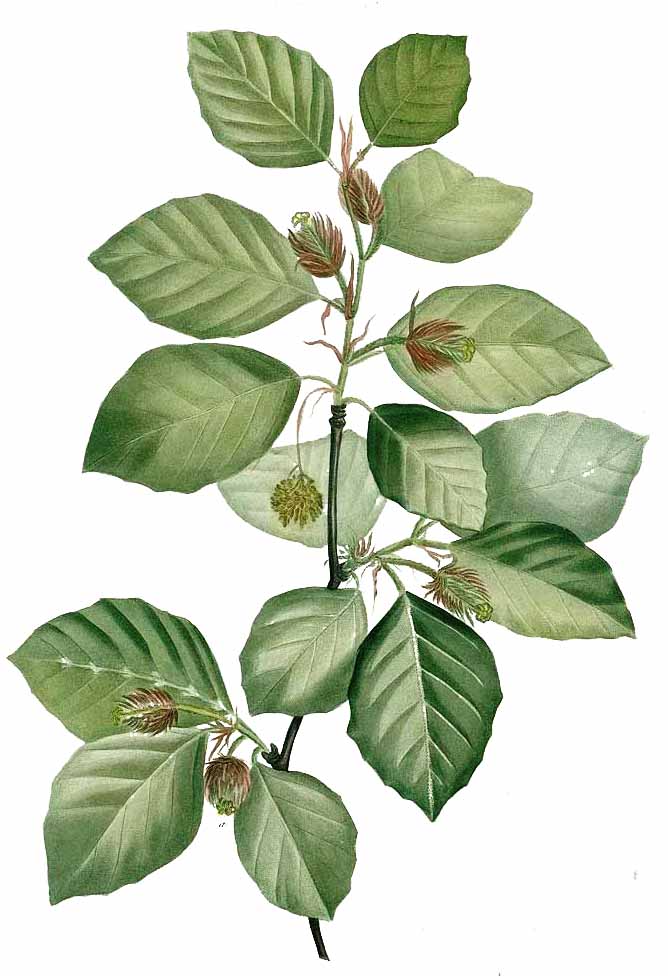
Quick Facts
- Plant Type: Huge rounded tree with massive trunk
- Foliage type: Deciduous
- Tree height: 40–60 feet
- Tree width/spread: 40–60 feet
- Hardiness: USDA Zones 4 to 7
- Flower Color: Inconspicuous but attractive in mass
- Sun/light exposure: Full sun to part shade
- Water requirements: Tolerates a range of conditions
- Seasonal Interest: Year-round due to form, leaf color and massive trunk
European Beach (Fagus sylvatica)
The European Beech tree has an unmatched place in history. The beechnuts were food for prehistoric man and are still consumed today. Beechnuts are eaten by birds and mammals, serving as an important food for chipmunks and squirrels.
The wood has been employed for centuries for both fire and furniture in Europe. Historians claim that the first written European literature was inscribed on Beech bark. The English word “book” comes from the Anglo-Saxon “boc”, a derivative for the Anglo-Saxon “beece” or Beech.
The European Beech has been described by many experts as the finest specimen tree available. Tree expert Michael Dirr hales it as “so beautiful that it overwhelms one at first glance.”
This tree is considered both a shade tree and an ornamental tree. It features a spreading canopy capable of blocking sunlight and adds visual interest and beauty to landscaping.
The bark of the European Beech is smooth gray. The trunk rapidly increase in diameter and has an elephant-hide appearance. European Beech are not long lived in the United States (150 years is about the maximum, trees up to 300 years old are known in Europe) the huge size of the trunk cause many people to assume that a tree is much older than it is.
In the United States, it grows best in humid coastal areas. Here, if you have the space for it, the European Beech will provide unmatched year-round beauty—shimmering green leaves unfurling in the spring, dense shade in the summer, striking autumn foliage and a pleasing winter silhouette.
The European Beech has several distinct cultivars, several of which can be found on the Arboretum’s grounds, including:
- A Fern Leaf Beech, technically Fagus sylvatica ‘Aspleniifolia’, with graceful, lustrous green cut leaves behind Vernon Court was planted around 1900. This specimen is the largest know of its type in the state of Rhode Island, and in 2015 it was named the Helen Walker Raleigh State Champion Tree.
- Near the entrance to the parking lot is a magnificent European Purple Beech or Copper Beech. Foliage emerges deep purple in spring, fades to purple-green in summer and finally turns copper in autumn.
- Young specimens of Weeping European Beech, also called Pendula, in both green and purple leaved forms, will be a delight for future visitors.

